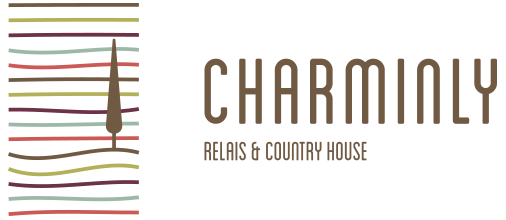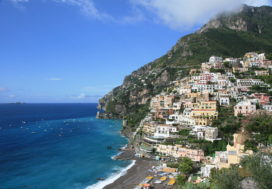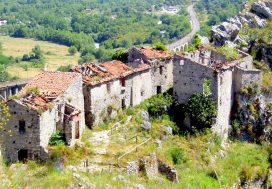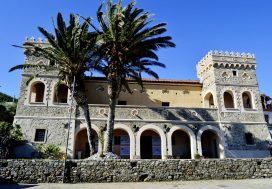TORCHIARA
In Torchiara you can visit the beautiful old town centre and enjoy the Green way path. This route will amaze you with points of historical and cultural interest in the nature. Penetrating the streets and alleys of the village you can visit the Peacock Palace and the Church of San Salvatore, the Tower Mangone, the Baron’s Palace, and Siniscalchi Palace.
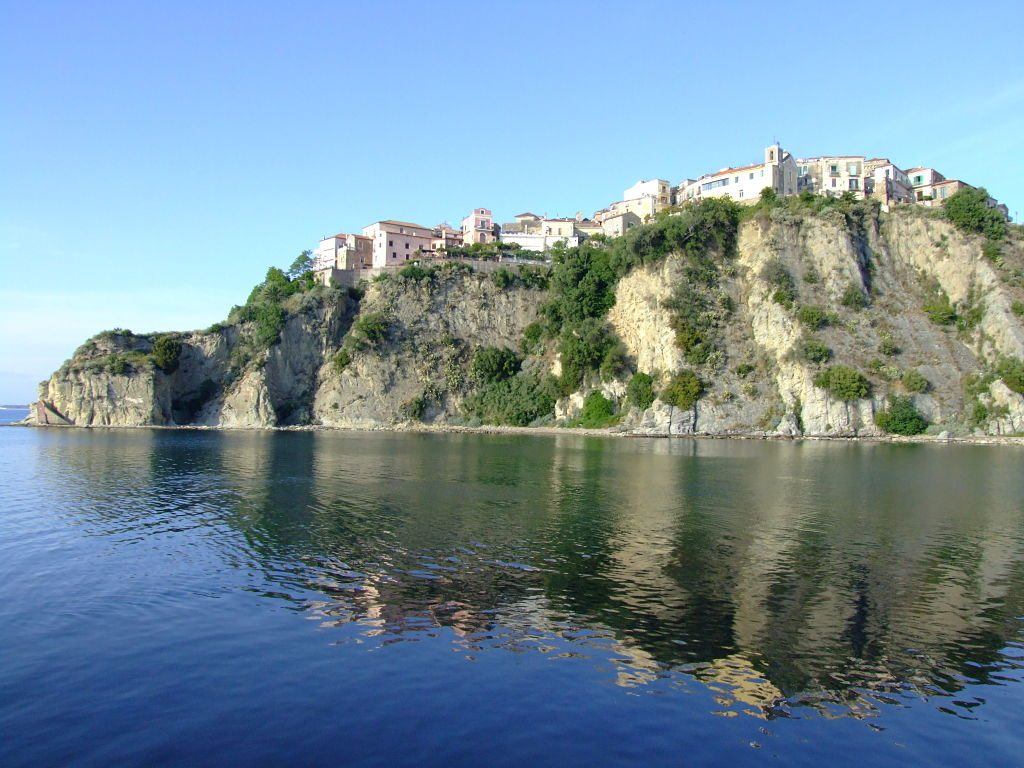
Promontory Agropoli
AGROPOLI
If you stop to Agropoli you will discover a picturesque village situated on a promontory overlooking the sea. Its main attraction is the magnificent Aragonese Castle, with its impressive complex of walls and towers dominating the coast. It was built in the fifteenth century on a pre-existing structure of Norman times, now is used for events and shows.
CASTELLABATE
Castellabate is municipality formed by eight villages, with the town hall in the village of Santa Maria. In this beautiful village overlooking the sea we can see the Castle of the Abbot, which gives its name to the village. The building dates back to the 1123 and includes a conference room used for various events.
Another interesting monument is the Cathedral of Santa Maria de Gulia, built in Romanesque style and rebuilt in Baroque style in later centuries.
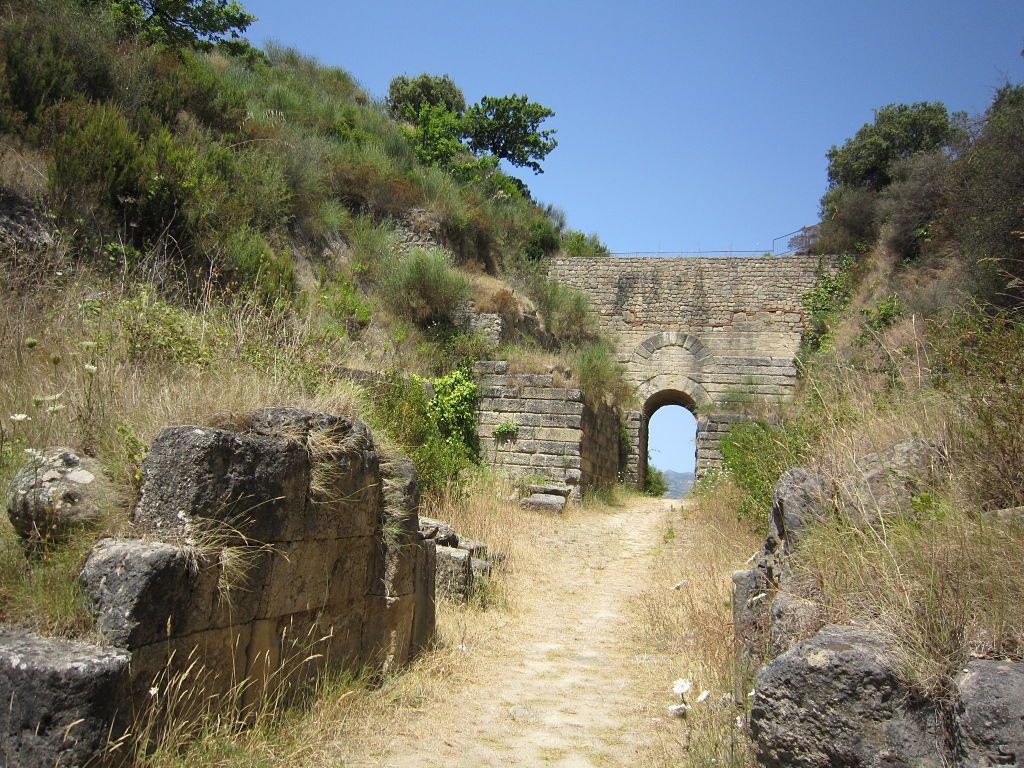
The pink door Velia
VELIA
The archaeological site Velia, offers an excellent testimony of the Hellenic and Roman times. The center was in fact inhabited since 540 B.C. until the Middle Ages with the construction of the castle on the acropolis. Along the way we can see the baths, the theater, the way of the the pink door, and the sacred areas.
PAESTUM
The Paestum archaeological site is listed as a UNESCO World Heritage site. The museum houses relics of inestimable value, while in the open-air site you can visit the beautiful temples of Athena, Hera I, Hera II.
BOSCO
In Bosco, situated in San Giovanni a Piro, there is the Museum of Josè Ortega. The Spanish painter who was a student of Picasso, spent here the last twenty years of his life and visiting the museum takes you into a colorful world and conquers you with its commitment to the pursuit of freedom, democracy and justice.
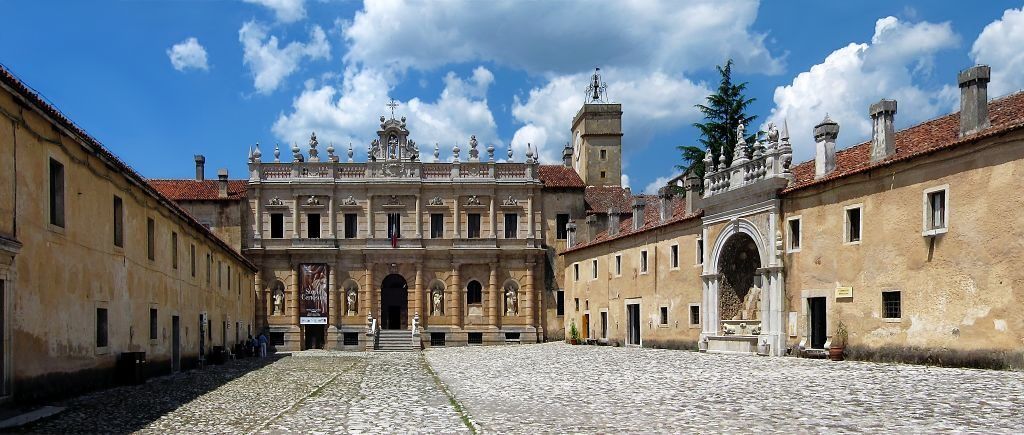
Certosa di San Lorenzo Padula
PADULA
In the village of Padula there is the Certosa di San Lorenzo, listed as a UNESCO World Heritage property. Built in 1306, saw many changes in the following centuries, especially in the Baroque period. The Certosa was not only a place of worship, for centuries it has been an important commercial center that dominated the area, thanks to the agricultural lands around the building.
In the Certosa in fact there were stables and barns, granaries, a pharmacy, and were produced spices and medicinal plants. The impressive structure includes a church, four cloisters, the courtyard, the Chapter Room, The Treasure Room, the Gardens, two cemeteries, two chapels. It’s also home of the Provincial Archaeological Museum of Western Lucania.
ROSCIGNO VECCHIO
Near Roscigno Vecchio, situated near the village of Sant’Angelo a Fasanella, you can admire the Statue of Antece, listed as a UNESCO World Heritage property.
Antece is also known as the Warrior of Costa Palomba, and is a fascinating sculpture on the rock representing a warrior with shield and spear. It dates back to the fourth century B.C. and is part of a rich panorama of artifacts that is still under investigation, and it is thought that the position of the statue could identify a sacred place.


